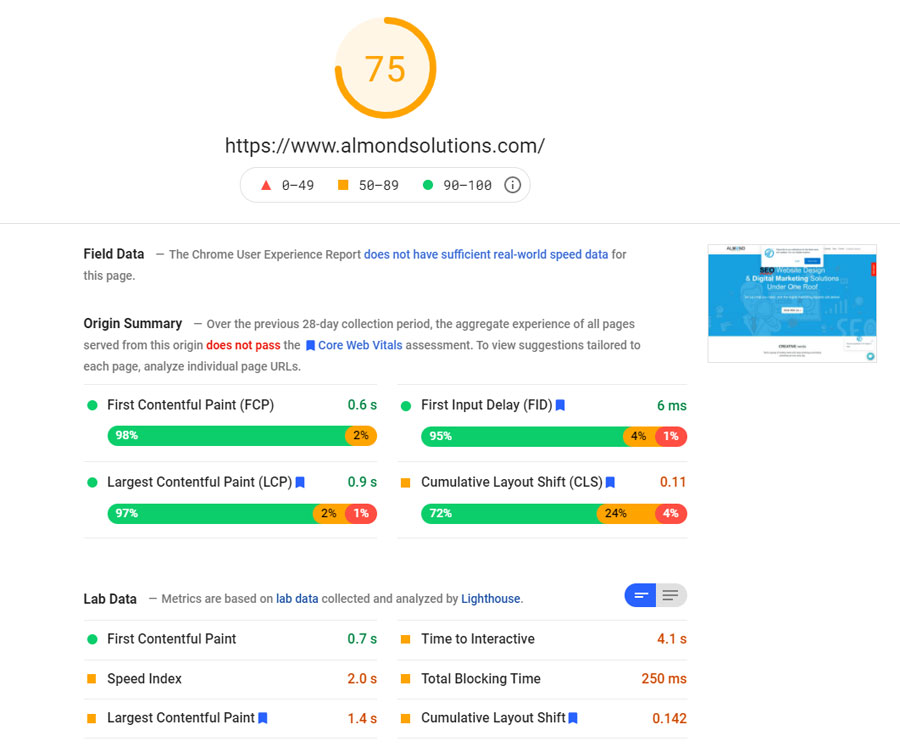Do you have a platform that helps marketers grow their business? If so, let's talk about it in our professional marketing community. Learn More
Does SEO Require Coding
Originally published: September 18, 2021 10:27:13 AM, updated: November 19, 2022 12:00:00 AM

Search Engine Optimization (SEO) is the process of enhancing the quantity and quality of traffic to your website through organic search engine results.
What goes into SEO?
Let's break down that definition and look at the elements to understand the true meaning of SEO.
Quality of traffic. You can get all the visits you want, but if they're going to your site because Google says you're an Apple computer resource when you're a farmer selling apples, that's not quality traffic. Instead, you want to attract customers who are interested in your items.
Quantity of traffic. More traffic is better if you have the proper folks clicking through from those search engine results pages (SERPs).
Organic results. Advertisements dominate many SERPs. Any traffic that you don't have to pay for is referred to as organic traffic.
How does SEO work?
There are two types of search engine optimization: on-site (what you can do to or on your website) and off-site (what you can do outside of your website), things you can optimize or make happen online but off your website.
On-site SEO efforts focus on optimizing the technical aspects of your website, ensuring that it is set up and updated in such a way that search engines can easily figure out who you are, what you do, and where you are. Google "crawls" websites for that information and saves it so it can match it to a user's query.
All procedures that can be conducted outside of the actual website in order to increase its position in search rankings are referred to as off-site optimization. These are steps that assist in creating as many high-quality backlinks (incoming links) as possible.
Coding for SEO
Now that we have a basic understanding of SEO and how it works, we can answer the question: Does SEO require coding?
The short answer would be that, in most cases, SEO does not necessitate much (or any) hands-on coding. You can do an excellent job of SEO without touching any code. However, the longer answer is that knowing how programming works or even performing some coding yourself is always beneficial.
Knowing the basics of HTML, JavaScript, CSS, and programming languages might help you handle SEO more efficiently.
Examples of code you might run into
1. Google Analytics snippet
The Google Analytics snippet is the last piece of code you may encounter. When you want to implement SEO on a website, the first step is to track your traffic to know if you're receiving any results.
After you've created a property in Google Analytics, you'll be given a tracking snippet to paste into your website so it can start collecting data.
The snippet itself is made up of HTML and JavaScript code, as shown below:
<!-- Global site tag (gtag.js) - Google Analytics -->
<script async src="https://www.googletagmanager.com/gtag/js?id=G-RKCJ8TRVJFDDK8"></script>
<script>
window.dataLayer = window.dataLayer || [];
function gtag(){dataLayer.push(arguments);}
gtag('js', new Date());
gtag('config', 'G-HGT8Y7EMGV8');
</script>
This snippet isn't meant to be modified or even comprehended; the code comes into play when deciding where to put it.
The code snippet must be placed in the <head> section of your website pages. This implies including it in the header.php file if you're using WordPress.
This HTML code is used to set up every website:
<!DOCTYPE html>
<html>
<head>
<title></title>
</head>
<body>
</body>
</html>
The head section contains many settings, data, and files, whereas the body section includes all of your website's content (even the actual website header).
2. Inline styling
You'll encounter this one a lot, but you'll probably only have to perform it very little. CSS is used to style a website (colors, fonts, and font sizes). CSS is usually compiled down into a number of large CSS files that load and give your website its appearance.
When developers are in a hurry, they will add inline CSS styling. This means it's valid CSS code (to style things), but it can't be opened or added to the file it belongs in. Rather than putting the code in a different file, they place it right in the middle of the element, whether it's a paragraph, heading, or image.
Inline styling looks like this:
<h2 style="font-size: 30px; color: red;">My red heading</h2>
As you can see, the font size and color of a <h2> heading element are directly styled.
You'll want to avoid inline styling as much as possible, but it's not the end of the world if you have to use it because it speeds up the setup process.
Inline styling is essentially the same as adding standard CSS to an element's style attribute. Color, font size, line height, letter spacing, font, and decoration (such as strikethrough or underline) are just a few of the text-based CSS attributes you can adjust with CSS. The whole list of CSS properties may be seen on the W3 Schools website.
Additionally, there are many aspects in SEO where the web developers are still the best to handle them, and here are a few:
- Structured data for SEO
- Writing JavaScripts to handle some site's actions
- Code performance
- Implementing the AMP (Accelerated Mobile Pages)
- Core Web Vitals

Final word
If you want to be a superstar SEO, you should be a technical person. Improving this skill is not hard where you can invest some time to start boosting your knowledge in this industry.
There is a good site to visit for SEO specialists looking for a job
Got any questions? Ping me on Twitter.
Join over 45,000 digital marketers. We provide a community for marketers to promote content and build professional branding. Join Now
578 Million Users
If you are a business owner or a marketing professional and want to target the MENA region (Arabic audience) to promote your business to nearly 578 million users, you are lucky you found us. We can work as an extension of your marketing team to manage the Arabic content and open the door for you.



